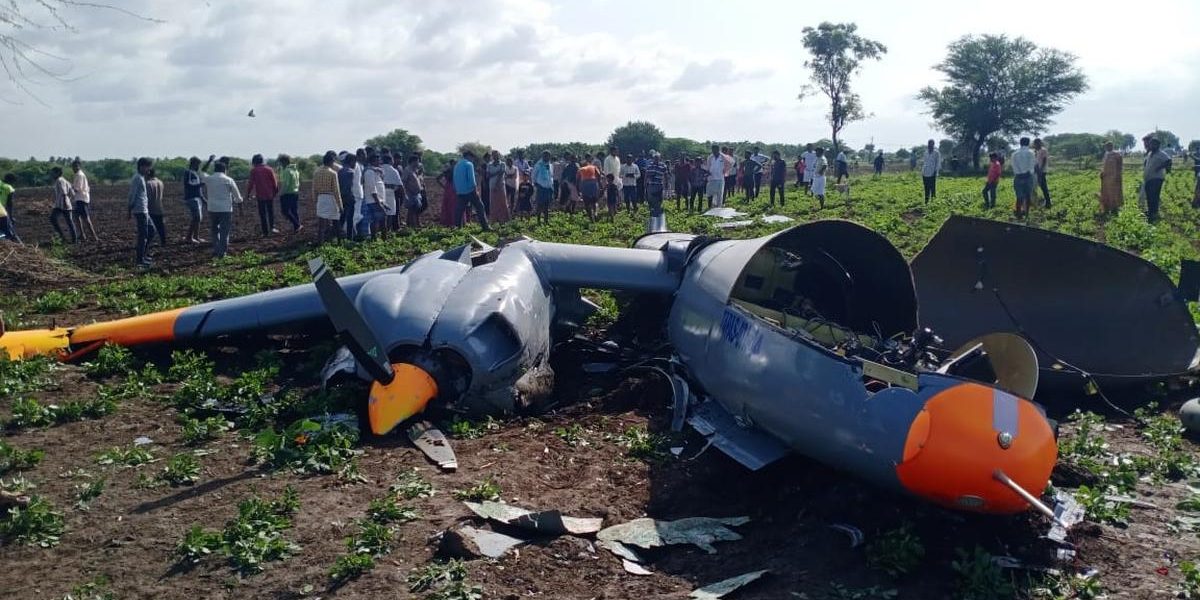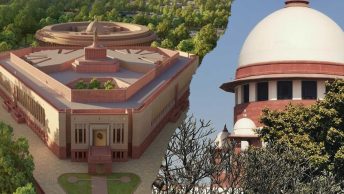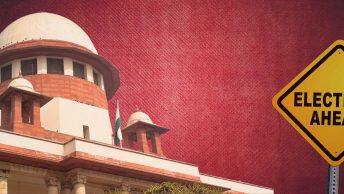Summary: This article argues that in case loss to property is suffered by a person due to a crash involving a State-owned airborne object then such a victim will be hard pressed to obtain compensation in private law. The next part of this article deals with public law remedies.
Introduction
In recent years there has been a noticeable trend of aircrafts owned and operated by the State crashing. While these majorly involve aircraft operated by the Indian Air Force, crashes can also involve objects intended to be put into orbit such as satellites. Further, mishaps during the testing of heavy ordnance can also lead to collateral damage. To take an example, an unmanned aerial vehicle (UAV) being tested by the DRDO crashed into a farmer’s field in August last year. There has been no review till date of the liability which will accrue to the State if damage or loss is caused to property in such scenarios. This piece aims to bridge this gap by undertaking a rigorous analysis of the possible claims which might be available to an aggrieved person. There are mainly two remedies available to such a person viz. damages through tort law in the private sphere and compensation under Article 32 or 226 by arguing that a constitutional tort has occurred. It should be noted that this article is solely concerned with damage to property and not loss of life. If loss of life is caused by such crashes, then a violation of Article 21 would be self-evident unlike in cases involving damage to property.
It is argued that while remedies are available to victims, these remedies largely exist solely on paper as one must cross numerous hurdles to avail of them. This first part is exclusively concerned with tort law. It is argued that the defence of sovereign immunity and section 123 of the Indian Evidence Act, 1872 (‘1872 Act’) make it extremely difficult to obtain unliquidated damages.
The futility of claiming damages through tort law
In private law, damages will have to be claimed by arguing that either the tort of negligence or that of private nuisance has been committed. Tort law is severely underdeveloped in India due to which one often turns to English law for guidance. However, there is no need to do so when it comes to these torts since the Supreme Court has dealt with their elements. A Division Bench in P.B. Desai v. State of Maharashtra broke down the tort of negligence into two questions: 1) Was the defendant negligent? 2) If yes, should the defendant be made to pay unliquidated damages? The second answer will be in the negative if the loss caused was too remote, non-foreseeable in nature, or if there are normative considerations which prevent the imposition of liability. Further, in Rafat Ali v. Sugni Bai, the Supreme Court defined private nuisance as interference with the use or enjoyment of the private property of a person or some right flowing from it.
a. The preliminary bar imposed by sovereign immunity
However, the path to damages is obstructed, irrespective of the tort which is argued, by the defence of sovereign immunity. In the Constitution Bench case of Kasturi Lal v. State of Uttar Pradesh, decided in the 1960s, the appellant had been arrested by police officers and the gold which he was carrying was taken into custody. The gold could not be returned to the appellant after he was released since a constable had taken it from the malkhana and gone to Pakistan. The Supreme Court absolved the State of Uttar Pradesh of any liability by holding that tortious acts of public servants which can be traced to sovereign functions of the State do not lead to any liability.
Kasturi Lal does not still hold the field as it has been criticised by subsequent benches of the Supreme Court. In N. Nagendra Rao & Co. v. State of Andhra Pradesh, the appellant had been a dealer in, among other things, fertiliser and foodgrains. His stock of fertiliser was seized by government officials by using the Essential Commodities Act, 1955 since it was found that he had an excessive stock of fertiliser. However, the appellant was absolved of any major wrongdoing due to which most of the fertiliser was ordered to be returned to him. There was a delay in doing this and hence spoilt fertiliser was returned to the appellant. The verdict was entered in favour of the appellant.
In the verdict, the Supreme Court did criticise the distinction between sovereign and non-sovereign acts as well as the defence of sovereign immunity as a whole. However, at the same time it laid down that certain functions of the State such as making peace, declaring war, raising and maintaining armed forces etc are not amenable to judicial scrutiny. It justified this stance by stating that these actions are political in nature and that they are indicators of ‘external sovereignty’. Hence, sovereign immunity can be claimed if a mishap occurs while testing munitions or airborne objects with military applications since defence of the country has been specifically mentioned as a ground for exclusion of liability in N. Nagendra Rao. The continued existence of this defense has been criticized from a human right’s perspective, but it continues to be good law.
b. Section 123 specifically obstructs a claim of negligence
Keeping aside sovereign immunity, section 123 of the 1872 Act makes it improbable that any suit for damages will succeed if negligence is argued to be present. This section enables the State to claim privilege with regards to unpublished official records related to its affairs. Thus, the State can shield from scrutiny any information regarding the physical nature of airborne objects, their manner of use, or other details regarding their nature. Such an embargo is highly prejudicial to claims of victims since it is next to impossible to arrive at a conclusion regarding negligence unless such information is made available. In R.K. Jain v. Union of India, it was held that judicial review of claims made under section 123 can take place by weighing the public interest involved in non-disclosure and the private interest of litigants in disclosure. It is unlikely that such a balancing of interests will be beneficial to victims in the factual scenarios that we are concerned with due to the high stakes associated with national defence.
The doctrine of res ipsa loquitor does provide a formidable challenge to this implicit bar put forth by section 123. As explained by the Supreme Court in Pushpabai Purshottam Udeshi v. Ranjit Ginning & Pressing Co. (P) Ltd., this presumption can be drawn when the accident “speaks for itself”. The plaintiff needs to only prove the accident in order to obtain a favourable verdict if the doctrine is applicable. However, as the Supreme Court itself has held in The Management of TNSTC (Coimbatore) Ltd. v. N. Chandrasekaran, this doctrine will be applicable if the evidence is such that it can be inferred that the accident was caused due to rashness or negligence. In R.S.R.T.C. v. Smt. Sayar Bai, even the Rajasthan High Court has held that res ipsa loquitor will not be applicable unless some “circumstances” are adduced in evidence. In this case involving a bus accident, the absence of a mechanical report was held to be a factor which led to the non-satisfaction of the initial burden required for res ipsa loquitor to be applicable. Thus, the absence of information (i.e. the investigation report) regarding the crash due to section 123 prevents plaintiffs’ from arguing that res ipsa loquitor is applicable.
Conclusion
Hence, to sum up, pursuing a remedy in tort law is unfeasible due to sovereign immunity as well as the privilege under section 123. While the former absolves the State of liability, the latter makes it impossible to assess if the State is liable when it comes to the tort of negligence. In the second part of this article, we aim to show how the manner in which Articles 21 and 300A have been interpreted paints a bleak picture for claims under Articles 32 and 226 as well.
Aadi Belhe is a second year B.A. LL.B. student at NLSIU, Bangalore, interested in criminal and constitutional law; Saarthak Agarwal is a second-year B.A. LL.B. student at NLSIU, Bangalore, with an interest in public law.
[Ed Note: This Article has been edited by Jeetendra Vishwakarma and published by Harshitha Adari from the Student Editorial Team.]





